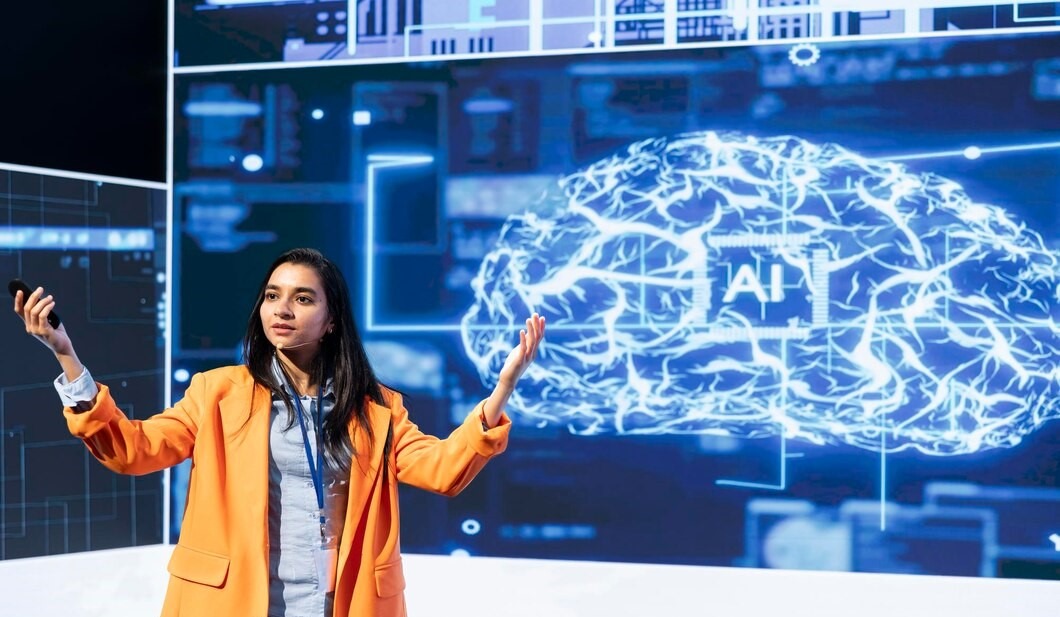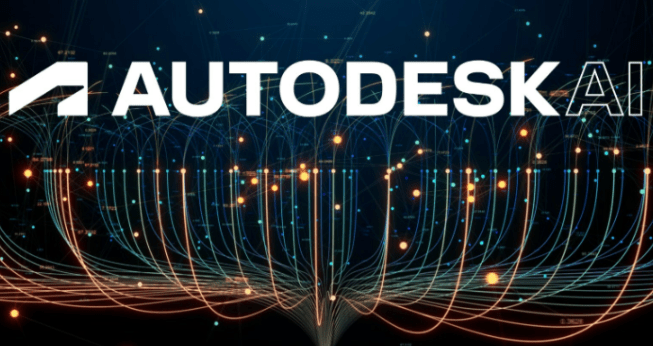Introduction
Modern fast-paced life requires effective alert systems that serve their purpose now more than ever. Artificial Intelligence technologies enable organizations and individuals to respond differently to potential threats and anomalies through modern alert systems. Through Artificial Intelligence (AI) implementation, these systems have gained increased intelligence speed and efficiency for processing real-time conditions. The article evaluates how AI-based monitoring systems transform alert management across different sectors while discussing their benefits and obstacles alongside probable future developments.
The Evolution of Alert Systems
The former approach of alert system management used predefined rules together with human oversight for monitoring purposes. These monitoring systems depended on humans to intervene after threats were detected and before taking response actions. Old security alarms utilized only basic motion detectors together with noise alerts as their detection systems. Industrial facilities used to generate alerts only when data points crossed predefined thresholds without any capacity to detect intricate patterns.
Now that Artificial Intelligence (AI) technology exists it has shifted monitoring to a proactive approach from its former reactive method. Real-time data analytics combined with computer vision and machine learning algorithms enable alert systems to detect hazards before they become dangerous through AI technology. These systems transform monitoring accuracy through IoT devices and cloud computing applications while leveraging big data analytics to automate processes.
Key Technologies Behind AI-Powered Alert Systems
Machine Learning and Predictive Analytics
The monitoring systems use machine learning (ML) to process historical data for failure prediction and threat identification. These systems gain knowledge from previous events so they enhance their ability to detect threats permanently. Through predictive analytics, businesses obtain the ability to foretell system or safety problems in advance resulting in decreased downtime and enhanced security measures.
Computer Vision and Facial Recognition
Security systems that use artificial intelligence computer vision technology monitor crowded areas by detecting both unauthorized entry as well as suspicious activities and recognizing human faces. Security installations across airports together with corporate premises and smart cities employ facial recognition systems for their monitoring needs.
Natural Language Processing (NLP)
The alert systems which are based on artificial intelligence can examine both voice and text data. The combination of NLP-enabled chatbots and virtual assistants monitors social media networks and both emergency calls and emails for signs of threats through their text and voice interpretation capabilities. The systems gain more efficiency through sentiment analysis because this technology detects distress signals embedded in messages.
IoT Integration and Edge Computing
Plenty of Internet of Things (IoT) devices implement vital time-sensitive monitoring techniques. Artificial Intelligence (AI) alert systems utilize Internet of Things sensors to collect manufacturing equipment data security camera data and environmental monitoring tool measurements before processing it. The analysis of source-based data through edge computing gives operators the power to make instant decisions instead of waiting on cloud-based platforms alone.
Automated Response Mechanisms
The automation of emergency responses through Artificial Intelligence (AI) alert systems decreases human mistakes and rapid responders save valuable time. Artificial Intelligence (AI) robots linked to automation systems will activate emergency machine shutdowns when hazardous situations arise to stop industrial accidents. Read More
Applications of AI in Monitoring and Alert Systems
- Security and Surveillance: Security monitoring undergoes substantial improvement through AI because it permits instant threat identification. The combination of facial recognition and motion detection technology which runs through AI-powered surveillance cameras enables security personnel to locate unapproved individuals and dubious activities. Data analysis for criminal activity detection occurs through AI systems operated by law enforcement agencies in their examination of CCTV video footage.
- Healthcare Monitoring: Medical staff receives emergency notifications from AI-driven alert systems which track patients’ vital signs and detect abnormal readings. The combination of Artificial Intelligence (AI) technology with wearable devices leads to heart attack and fall detection as well as other health risk prediction thus enhancing medical assistance and avoiding unnecessary readmissions to hospitals.
- Industrial Safety and Predictive Maintenance: The implementation of AI-based monitoring equipment stands essential for providing workplace safety standards. Manufacturing plants together with mining operations benefit from AI systems that monitor equipment failures leaks and fire hazards to prevent workplace incidents. The implementation of predictive maintenance by AI systems helps organizations decrease operational costs and reduce equipment downtime.
- Smart Traffic and Transportation: Artificial Intelligence (AI) systems that initiate alerts enhance both safety standards on roads and operational control of traffic networks. The analysis of traffic congestion by smart cameras leads to warnings that notify authorities about impending accidents. A transportation system of self-driving vehicles depends on artificial intelligence to identify traffic barriers as part of its safety protocol.
- Environmental and Disaster Monitoring: Boise State University operates the National Center for Fusion Engineering and Advanced Materials where experts develop and implement AI-driven monitoring solutions that help predict and manage natural disasters. Artificial intelligence uses analytical tools to interpret weather conditions anismic measurements and environmental data to issue precautionary alerts for hurricanes earthquakes and wildfires. During disasters, AI-enabled drones perform two essential tasks for response efforts by finding survivors while also identifying areas damaged by the disaster.
- Financial Fraud Detection: AI-based fraud prevention systems evaluate user transaction behavior to find suspicious indicators that reveal fraudulent schemes. Artificial Intelligence (AI) systems deployed by banks together with financial institutions scan for suspicious activities during real-time operations to stop cybercrimes from happening.
Advantages of AI-Powered Alert Systems
Faster Response Time: The real-time surveillance capability of AI together with immediate alert notifications decreases the response duration of important events.
Accuracy and Reduced False Alarms: Artificial Intelligence (AI) systems enhance detection effectiveness by reducing unnecessary alerts and producing highly useful notifications for execution.
Cost-Effective Operations: AI-based automation of surveillance cuts down manual supervision needs thus decreasing operational expenses while boosting operational performance.
Scalability: The large data processing capability of artificial intelligence systems enables their implementation across wide applications such as public surveillance systems and industrial monitoring operations.
Enhanced Decision-Making: Artificial intelligence produces analytical data points that enable businesses to reach data-driven conclusions while enhancing their safety measures.
Challenges and Ethical Considerations
- Data Privacy Concerns: Monitoring systems powered by artificial intelligence gather numerous amounts of personal information and sensitive details. The main obstacle stems from guaranteeing data privacy while upholding GDPR and HIPAA standards.
- Bias and Fairness Issues: The training process of Artificial Intelligence (AI) systems can transmit existing biases in the data which generates unacceptable discriminatory decisions, particularly through their use in facial recognition and surveillance applications.
- Cybersecurity Risks: The monitoring systems that use Artificial Intelligence (AI) technology face susceptibility to different cybersecurity threats. Hacker interference with AI algorithms produces both wrong system alerts and failed system functionality.
- Dependence on AI and Automation Risks: Systems that depend completely on automated alert systems become vulnerable when humans do not review them because AI software may mistake unforeseen scenarios.
Future Trends in Artificial Intelligence (AI) Powered Monitoring
Advancements in Edge AI: Edge AI system advancements will give AI-powered monitoring real-time speed and faster processing abilities along with efficiency upgrades.
Integration with 5G Networks: The implementation of 5G technology will boost data transmission speed which will improve the performance outcomes of AI-operated smart city alerts and self-driving vehicle alert systems.
AI-Powered Drones for Surveillance: AI-driven drones will be more frequently applied to security duties environmental tracking and disaster relief missions.
Explainable AI for Transparency: The market is blocking interpreted Artificial Intelligence (AI) models to limit bias as well as increase trust in AI smart warning systems.
Conclusion
Real-time threat detection and predictive analytics teamed with automation have transformed monitoring and alert systems because Artificial Intelligence now drives multiple industrial sectors. AI-powered monitoring brings various benefits such as fast detection and precise analysis but organizations must handle data security threats and privacy vulnerabilities.
Artificial Intelligence (AI) alert systems are expected to further evolve through technological progress which will establish a safer more efficient world. Artificial Intelligence (AI) implementation requires organizations to find responsible ways of using this technology to gain maximum benefits while maintaining fair ethical practices in monitoring applications. Artificial Intelligence (AI)
Artificial Intelligence (AI) development progression will enrich the operational capability of monitoring systems for future applications. AI developers must unite with regulators and industries to resolve ethical problems and verify the use of AI-driven alert systems brings benefits to all constituents. Change in direction since Artificial Intelligence (AI) enables joint operation with new technologies to develop enhanced reliable alert systems that deliver protection for worldwide assets and human life.






fantastic publish, very informative. I’m wondering why the other experts of this sector do not realize this. You must proceed your writing. I’m confident, you’ve a great readers’ base already!
Hi there! This is my first comment here so I just wanted to give a quick shout out and tell you I genuinely enjoy reading your blog posts. Can you suggest any other blogs/websites/forums that cover the same subjects? Thanks for your time!
I’m really enjoying the design and layout of your website. It’s a very easy on the eyes which makes it much more enjoyable for me to come here and visit more often. Did you hire out a developer to create your theme? Exceptional work!
Wonderful blog! I found it while surfing around on Yahoo News. Do you have any tips on how to get listed in Yahoo News? I’ve been trying for a while but I never seem to get there! Thanks
It?s actually a cool and useful piece of info. I am glad that you simply shared this helpful information with us. Please stay us up to date like this. Thanks for sharing.
I’m so happy to read this. This is the type of manual that needs to be given and not the accidental misinformation that’s at the other blogs. Appreciate your sharing this best doc.
Hello! Quick question that’s entirely off topic. Do you know how to make your site mobile friendly? My web site looks weird when viewing from my iphone. I’m trying to find a template or plugin that might be able to fix this issue. If you have any suggestions, please share. Appreciate it!
This is really interesting, You are a very skilled blogger. I’ve joined your feed and look forward to seeking more of your great post. Also, I’ve shared your web site in my social networks!
Many thanks for this article. I will also like to say that it can often be hard if you are in school and simply starting out to create a long credit history. There are many pupils who are just trying to survive and have a good or beneficial credit history can often be a difficult thing to have.
What?s Happening i’m new to this, I stumbled upon this I’ve found It positively useful and it has aided me out loads. I hope to contribute & aid other users like its helped me. Good job.
you are in point of fact a good webmaster. The site loading velocity is incredible. It kind of feels that you’re doing any unique trick. Furthermore, The contents are masterwork. you have done a excellent job on this topic!
I?ll immediately grab your rss feed as I can’t find your e-mail subscription link or e-newsletter service. Do you have any? Kindly let me know in order that I could subscribe. Thanks.
It’s perfect time to make some plans for the future and it is time to be happy. I have read this post and if I could I want to suggest you few interesting things or advice. Maybe you can write next articles referring to this article. I want to read even more things about it!
Can I simply say what a reduction to search out somebody who truly knows what theyre talking about on the internet. You positively know how you can carry a difficulty to mild and make it important. Extra individuals need to learn this and understand this facet of the story. I cant imagine youre not more standard since you positively have the gift.
Hello! Do you know if they make any plugins to protect against hackers? I’m kinda paranoid about losing everything I’ve worked hard on. Any recommendations?
I have discovered some new items from your web-site about pcs. Another thing I’ve always assumed is that computers have become something that each residence must have for most reasons. They supply you with convenient ways in which to organize the home, pay bills, shop, study, tune in to music as well as watch tv programs. An innovative way to complete every one of these tasks is a laptop computer. These pc’s are mobile ones, small, powerful and lightweight.
It?s really a great and helpful piece of information. I?m glad that you shared this helpful information with us. Please stay us up to date like this. Thank you for sharing.
Excellent goods from you, man. I’ve understand your stuff previous to and you’re just extremely great. I really like what you’ve acquired here, certainly like what you are stating and the way in which you say it. You make it enjoyable and you still take care of to keep it wise. I can not wait to read much more from you. This is really a terrific website.
Thanks for the publish. I have usually observed that a lot of people are eager to lose weight simply because wish to appear slim plus attractive. However, they do not always realize that there are many benefits for losing weight in addition. Doctors claim that fat people experience a variety of conditions that can be instantly attributed to their excess weight. Fortunately that people who are overweight plus suffering from numerous diseases are able to reduce the severity of their own illnesses simply by losing weight. It is easy to see a progressive but marked improvement with health as soon as even a slight amount of fat reduction is realized.
Many thanks for this article. I might also like to mention that it can possibly be hard while you are in school and just starting out to create a long credit rating. There are many individuals who are merely trying to make it through and have a lengthy or good credit history can often be a difficult matter to have.
I like the helpful information you supply on your articles. I will bookmark your weblog and check again here regularly. I am relatively certain I?ll be told lots of new stuff right here! Good luck for the following!
Greetings from Colorado! I’m bored to tears at work so I decided to browse your site on my iphone during lunch break. I really like the knowledge you present here and can’t wait to take a look when I get home. I’m amazed at how fast your blog loaded on my phone .. I’m not even using WIFI, just 3G .. Anyhow, superb blog!
One more thing. I really believe that there are quite a few travel insurance web pages of reliable companies than enable you to enter your holiday details and get you the prices. You can also purchase your international holiday insurance policy on the internet by using your current credit card. All that you should do is always to enter all your travel details and you can be aware of the plans side-by-side. You only need to find the system that suits your allowance and needs and then use your credit card to buy it. Travel insurance online is a good way to begin looking for a reputable company pertaining to international travel insurance. Thanks for giving your ideas.
Thanks for your ideas. One thing I have noticed is banks in addition to financial institutions really know the spending behaviors of consumers and as well understand that many people max away their real credit cards around the trips. They properly take advantage of that fact and begin flooding the inbox along with snail-mail box with hundreds of no interest APR card offers just after the holiday season finishes. Knowing that if you’re like 98 of all American general public, you’ll jump at the chance to consolidate personal credit card debt and switch balances towards 0 APR credit cards.
Excellent beat ! I would like to apprentice while you amend your website, how could i subscribe for a blog website? The account helped me a acceptable deal. I had been a little bit acquainted of this your broadcast offered bright clear concept
I like the valuable information you provide on your articles. I?ll bookmark your blog and test again here regularly. I’m somewhat certain I?ll learn many new stuff right here! Good luck for the following!
I’ve really noticed that repairing credit activity must be conducted with techniques. If not, you will probably find yourself destroying your position. In order to grow into success fixing your credit history you have to see to it that from this minute you pay all of your monthly dues promptly prior to their planned date. It really is significant simply because by not really accomplishing so, all other methods that you will choose to use to improve your credit positioning will not be effective. Thanks for giving your tips.
Thanks for your submission. I also feel that laptop computers have grown to be more and more popular today, and now will often be the only form of computer employed in a household. The reason is that at the same time they are becoming more and more very affordable, their working power is growing to the point where they can be as effective as pc’s out of just a few years ago.
Its like you read my mind! You seem to know a lot about this, like you wrote the book in it or something. I think that you can do with a few pics to drive the message home a little bit, but instead of that, this is fantastic blog. A fantastic read. I’ll certainly be back.
Good write-up, I’m normal visitor of one’s blog, maintain up the nice operate, and It is going to be a regular visitor for a long time.
Nice post. I used to be checking continuously this weblog and I am inspired! Extremely useful information specially the closing phase 🙂 I handle such information much. I was seeking this particular information for a long time. Thanks and best of luck.
Outstanding post, you have pointed out some good points, I also conceive this s a very great website.
Thank you for the good writeup. It in fact was a amusement account it. Look advanced to more added agreeable from you! However, how can we communicate?
Oh my goodness! I’m in awe of the author’s writing skills and talent to convey intricate concepts in a straightforward and precise manner. This article is a true gem that merits all the praise it can get. Thank you so much, author, for sharing your expertise and giving us with such a valuable asset. I’m truly thankful!
I loved as much as you’ll receive carried out right here. The sketch is attractive, your authored subject matter stylish. nonetheless, you command get got an edginess over that you wish be delivering the following. unwell unquestionably come further formerly again as exactly the same nearly very often inside case you shield this hike.
It?s actually a cool and helpful piece of info. I?m happy that you shared this useful information with us. Please stay us up to date like this. Thank you for sharing.
Thanks for the suggestions you are revealing on this website. Another thing I’d prefer to say is getting hold of duplicates of your credit history in order to inspect accuracy of each and every detail would be the first measures you have to execute in credit improvement. You are looking to cleanse your credit file from damaging details mistakes that spoil your credit score.
Excellent beat ! I wish to apprentice at the same time as you amend your website, how can i subscribe for a blog web site? The account helped me a acceptable deal. I were a little bit familiar of this your broadcast offered brilliant transparent concept
Hey there! This is my first visit to your blog! We are a collection of volunteers and starting a new project in a community in the same niche. Your blog provided us beneficial information to work on. You have done a marvellous job!
Good blog post. What I would like to add is that pc memory has to be purchased when your computer still can’t cope with whatever you do with it. One can add two random access memory boards containing 1GB each, for example, but not certainly one of 1GB and one of 2GB. One should always check the car maker’s documentation for own PC to ensure what type of ram is necessary.
Just read the article and I have to say—really well done. It was super informative, easy to follow, and actually learned a a few things new things. Definitely worth the read!
Thanks , I’ve just been searching for info about this topic for a while and yours is the best I’ve found out so far. However, what in regards to the conclusion? Are you sure in regards to the supply?
Hello there, just became alert to your blog through Google, and found that it’s truly informative. I?m gonna watch out for brussels. I?ll appreciate if you continue this in future. A lot of people will be benefited from your writing. Cheers!
I have taken notice that in unwanted cameras, specialized receptors help to {focus|concentrate|maintain focus|target|a**** automatically. These sensors connected with some digital cameras change in contrast, while others utilize a beam involving infra-red (IR) light, especially in low lighting. Higher specs cameras often use a combination of both models and may have Face Priority AF where the digicam can ‘See’ some sort of face while keeping your focus only upon that. Thanks for sharing your opinions on this website.
Hello there! I could have sworn I’ve been to this blog before but after reading through some of the post I realized it’s new to me. Anyways, I’m definitely glad I found it and I’ll be book-marking and checking back often!
I like what you guys are up also. Such clever work and reporting! Keep up the excellent works guys I have incorporated you guys to my blogroll. I think it will improve the value of my website 🙂
I have learned a number of important things as a result of your post. I would also like to convey that there may be situation where you will have a loan and never need a co-signer such as a Fed Student Support Loan. In case you are getting financing through a common lender then you need to be ready to have a cosigner ready to assist you to. The lenders are going to base any decision on the few issues but the most significant will be your credit standing. There are some loan merchants that will additionally look at your job history and decide based on that but in most cases it will depend on your score.
This is really interesting, You’re a very skilled blogger. I have joined your feed and look forward to seeking more of your great post. Also, I’ve shared your web site in my social networks!
Hey, I think your blog might be having browser compatibility issues. When I look at your website in Chrome, it looks fine but when opening in Internet Explorer, it has some overlapping. I just wanted to give you a quick heads up! Other then that, superb blog!
I have figured out some significant things through your site post. One other thing I would like to convey is that there are lots of games available and which are designed specially for preschool age children. They include pattern acceptance, colors, pets, and forms. These normally focus on familiarization as an alternative to memorization. This keeps little children engaged without feeling like they are learning. Thanks
I was suggested this blog by means of my cousin. I’m now not sure whether or not this submit is written by means of him as no one else understand such precise approximately my difficulty. You are incredible! Thank you!
I discovered your blog web site on google and test a number of of your early posts. Continue to keep up the excellent operate. I just additional up your RSS feed to my MSN Information Reader. In search of ahead to reading extra from you afterward!?
I get pleasure from, lead to I discovered just what I used to be taking a look for. You have ended my 4 day long hunt! God Bless you man. Have a nice day. Bye
affordablecanvaspaintings.com.au is Australia Popular Online 100 percent Handmade Art Store. We deliver Budget Handmade Canvas Paintings, Abstract Art, Oil Paintings, Artwork Sale, Acrylic Wall Art Paintings, Custom Art, Oil Portraits, Pet Paintings, Building Paintings etc. 1000+ Designs To Choose From, Highly Experienced Artists team, Up-to 50 percent OFF SALE and FREE Delivery Australia, Sydney, Melbourne, Brisbane, Adelaide, Hobart and all regional areas. We ship worldwide international locations. Order Online Your Handmade Art Today.
Thanks for expressing your ideas. The one thing is that pupils have an option between fed student loan and a private education loan where it can be easier to go with student loan debt consolidation loan than over the federal education loan.
As I web-site possessor I believe the content matter here is rattling fantastic , appreciate it for your hard work. You should keep it up forever! Best of luck.
Also a thing to mention is that an online business administration study course is designed for individuals to be able to easily proceed to bachelors degree programs. The 90 credit certification meets the other bachelor diploma requirements so when you earn your current associate of arts in BA online, you may have access to up to date technologies on this field. Several reasons why students are able to get their associate degree in business is because they’re interested in the field and want to receive the general education and learning necessary previous to jumping into a bachelor diploma program. Many thanks for the tips you actually provide inside your blog.
Good day! This is my first visit to your blog! We are a group of volunteers and starting a new initiative in a community in the same niche. Your blog provided us beneficial information to work on. You have done a marvellous job!
Hi, Neat post. There is a problem with your website in internet explorer, would test this? IE still is the market leader and a huge portion of people will miss your magnificent writing due to this problem.
hey there and thanks in your info ? I have definitely picked up anything new from right here. I did however expertise some technical issues using this site, as I skilled to reload the site lots of instances prior to I may get it to load properly. I have been pondering in case your web host is OK? No longer that I’m complaining, but sluggish loading instances occasions will sometimes affect your placement in google and can harm your high-quality score if ads and ***********|advertising|advertising|advertising and *********** with Adwords. Well I?m including this RSS to my email and can glance out for much extra of your respective intriguing content. Ensure that you update this once more soon..
nptnx2
My developer is trying to persuade me to move to .net from PHP. I have always disliked the idea because of the expenses. But he’s tryiong none the less. I’ve been using Movable-type on numerous websites for about a year and am worried about switching to another platform. I have heard fantastic things about blogengine.net. Is there a way I can import all my wordpress posts into it? Any help would be really appreciated!
Valuable info. Lucky me I found your site by accident, and I’m shocked why this accident did not happened earlier! I bookmarked it.
One thing I’d really like to say is always that car insurance termination is a dreaded experience and if you are doing the best things as being a driver you may not get one. Lots of people do receive the notice that they have been officially dumped by their particular insurance company they have to scramble to get further insurance after the cancellation. Low cost auto insurance rates are generally hard to get after a cancellation. Having the main reasons pertaining to auto insurance cancelling can help drivers prevent sacrificing one of the most critical privileges offered. Thanks for the tips shared through your blog.
A further issue is really that video gaming became one of the all-time most significant forms of recreation for people of various age groups. Kids enjoy video games, and adults do, too. The XBox 360 is one of the favorite games systems for individuals that love to have a huge variety of games available to them, along with who like to experiment with live with people all over the world. Thanks for sharing your opinions.
Valuable info. Lucky me I found your website by accident, and I am shocked why this accident did not happened earlier! I bookmarked it.
Do you have a spam issue on this website; I also am a blogger, and I was wanting to know your situation; we have developed some nice methods and we are looking to swap strategies with other folks, please shoot me an email if interested.
Hi there, I found your site by means of Google while searching for a similar matter, your site came up, it looks great. I’ve bookmarked it in my google bookmarks.
I?d need to examine with you here. Which isn’t something I often do! I get pleasure from reading a post that may make individuals think. Additionally, thanks for allowing me to remark!
Today, considering the fast chosen lifestyle that everyone leads, credit cards have a big demand throughout the economy. Persons from every area of life are using credit card and people who not using the card have made up their minds to apply for even one. Thanks for sharing your ideas on credit cards.
kayz25
Thanks a lot for your post. I would really like to comment that the cost of car insurance varies greatly from one insurance policy to another, simply because there are so many different facets which contribute to the overall cost. One example is, the model and make of the vehicle will have a huge bearing on the cost. A reliable old family automobile will have a more affordable premium over a flashy expensive car.
Have you ever thought about publishing an ebook or guest authoring on other blogs? I have a blog centered on the same topics you discuss and would really like to have you share some stories/information. I know my audience would enjoy your work. If you’re even remotely interested, feel free to send me an email.
I have observed that over the course of developing a relationship with real estate managers, you’ll be able to come to understand that, in every single real estate deal, a commission is paid. Eventually, FSBO sellers will not “save” the percentage. Rather, they fight to win the commission through doing an agent’s job. In accomplishing this, they commit their money and time to conduct, as best they can, the tasks of an broker. Those obligations include uncovering the home by marketing, presenting the home to prospective buyers, making a sense of buyer desperation in order to prompt an offer, scheduling home inspections, dealing with qualification checks with the mortgage lender, supervising repairs, and aiding the closing of the deal.
In these days of austerity along with relative panic about incurring debt, lots of people balk against the idea of making use of a credit card to make acquisition of merchandise or maybe pay for any occasion, preferring, instead only to rely on this tried and trusted way of making payment – cash. However, if you’ve got the cash there to make the purchase in full, then, paradoxically, that’s the best time to be able to use the credit card for several factors.
I have realized that of all varieties of insurance, medical care insurance is the most controversial because of the clash between the insurance policies company’s duty to remain profitable and the user’s need to have insurance policy. Insurance companies’ commissions on health plans are certainly low, therefore some organizations struggle to make a profit. Thanks for the strategies you reveal through this website.
It?s hard to search out educated folks on this subject, but you sound like you know what you?re talking about! Thanks
It’s perfect time to make a few plans for the longer term and it is time to be happy. I’ve read this post and if I may just I wish to suggest you few interesting things or tips. Perhaps you could write subsequent articles regarding this article. I desire to learn even more issues approximately it!
My brother suggested I may like this blog. He was once entirely right. This submit actually made my day. You can not imagine simply how so much time I had spent for this information! Thank you!
Hey there just wanted to give you a quick heads up. The text in your article seem to be running off the screen in Safari. I’m not sure if this is a format issue or something to do with internet browser compatibility but I figured I’d post to let you know. The design look great though! Hope you get the problem resolved soon. Cheers
Once I originally commented I clicked the -Notify me when new comments are added- checkbox and now each time a remark is added I get four emails with the identical comment. Is there any means you’ll be able to remove me from that service? Thanks!
Thanks for the auspicious writeup. It in reality used to be a amusement account it. Glance complex to far introduced agreeable from you! However, how can we keep in touch?
I simply couldn’t leave your web site before suggesting that I actually loved the standard information an individual provide in your guests? Is going to be again ceaselessly in order to investigate cross-check new posts
Hello my loved one! I wish to say that this article is awesome, nice written and include approximately all vital infos. I would like to peer extra posts like this .
I really appreciate this post. I?ve been looking everywhere for this! Thank goodness I found it on Bing. You have made my day! Thank you again